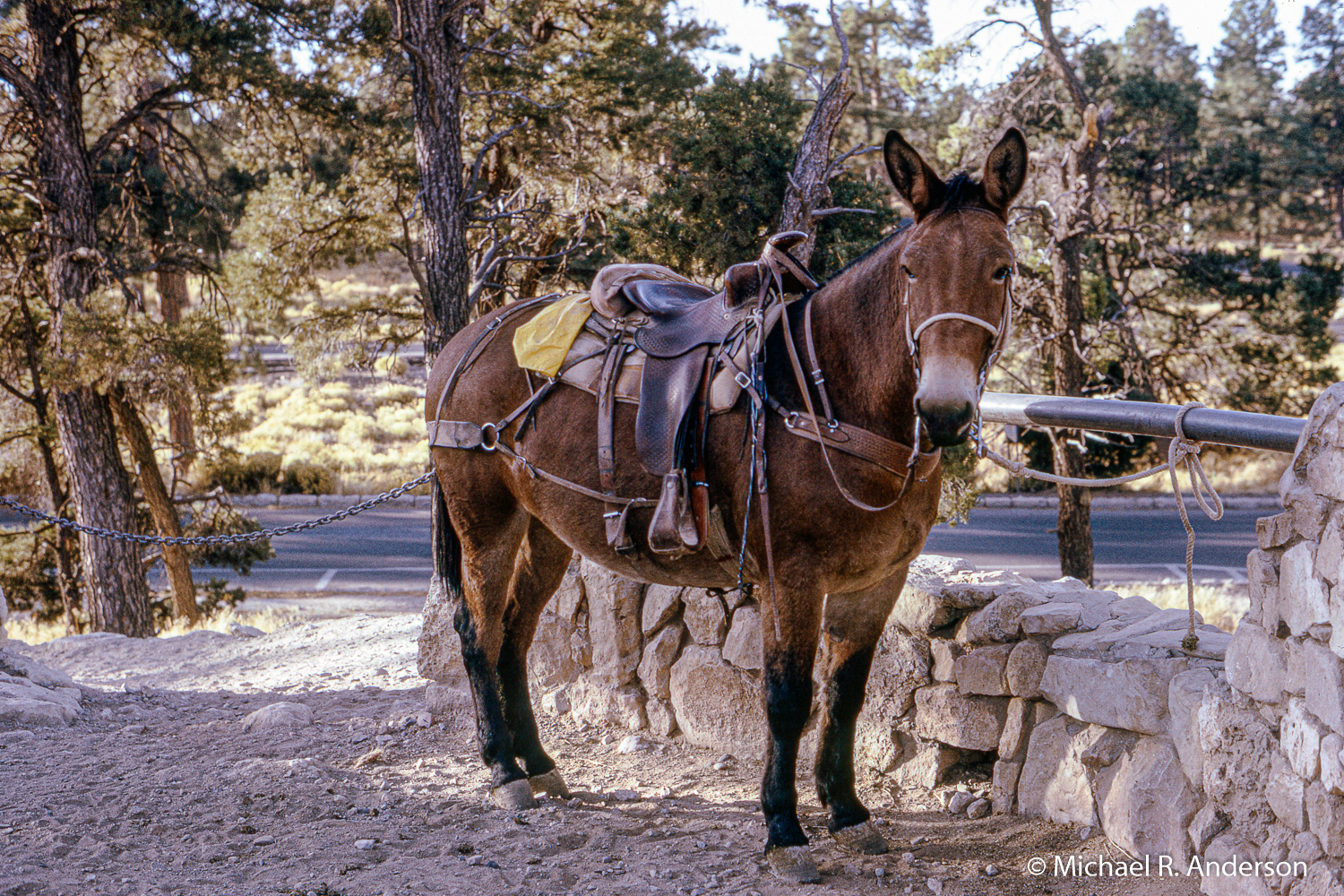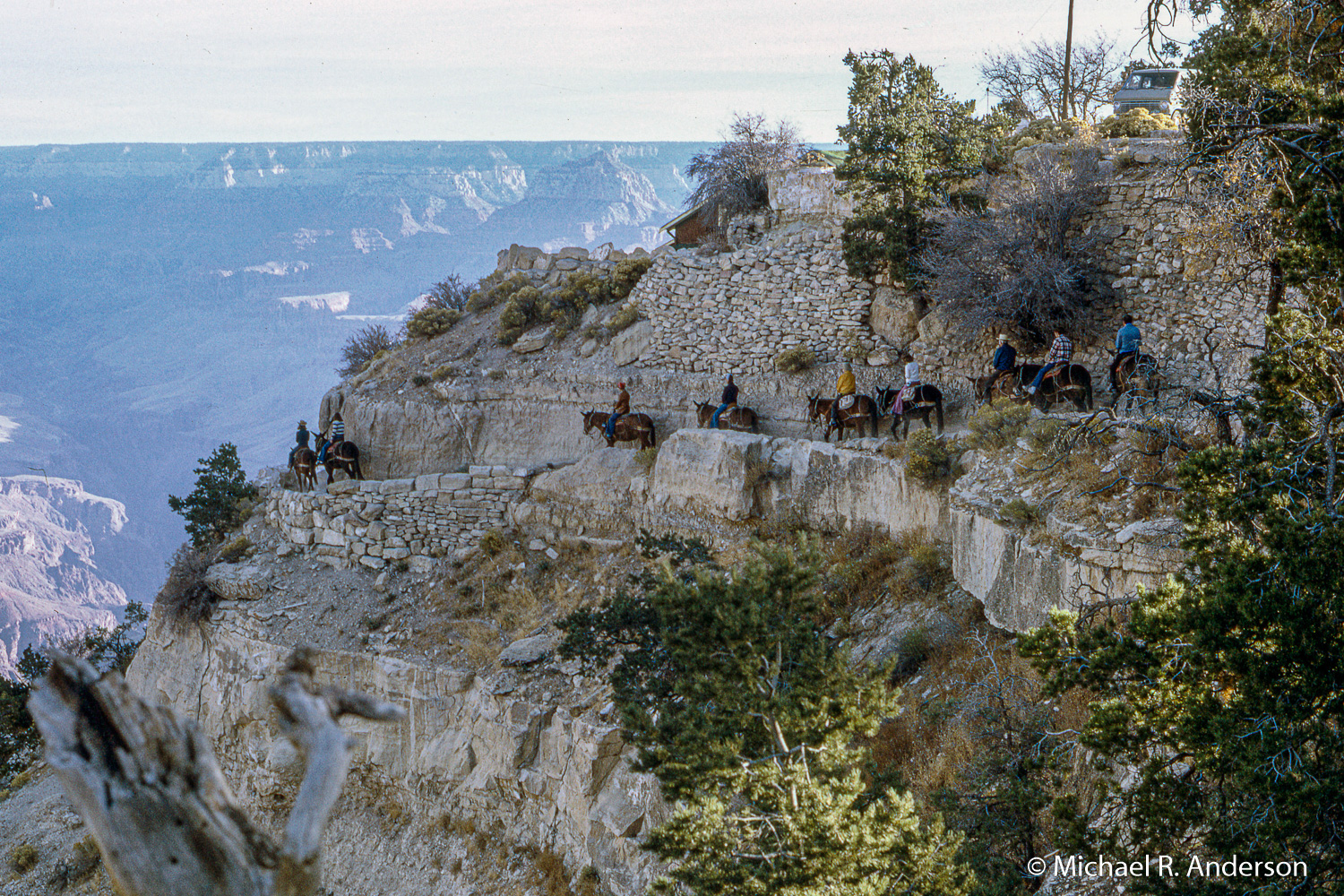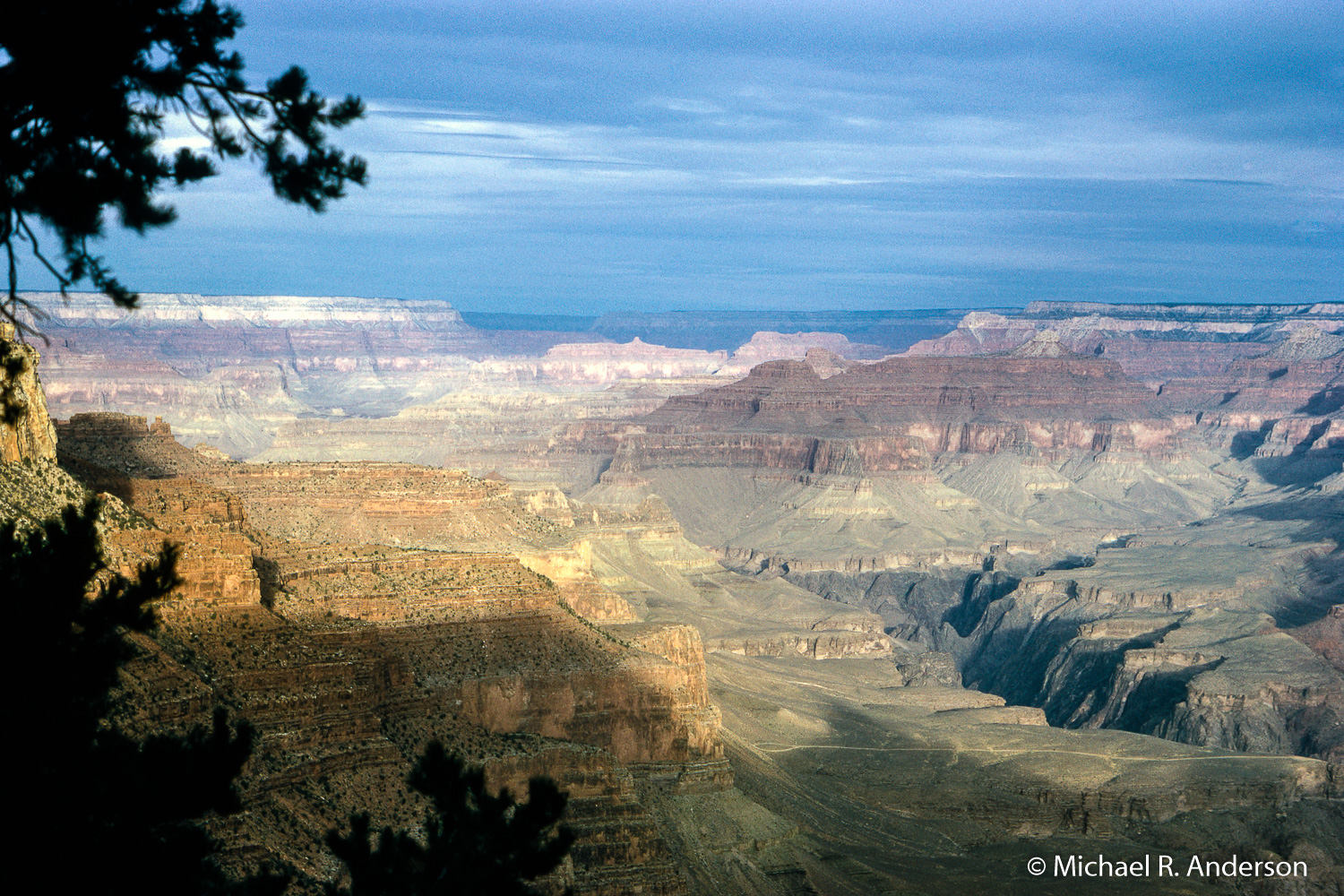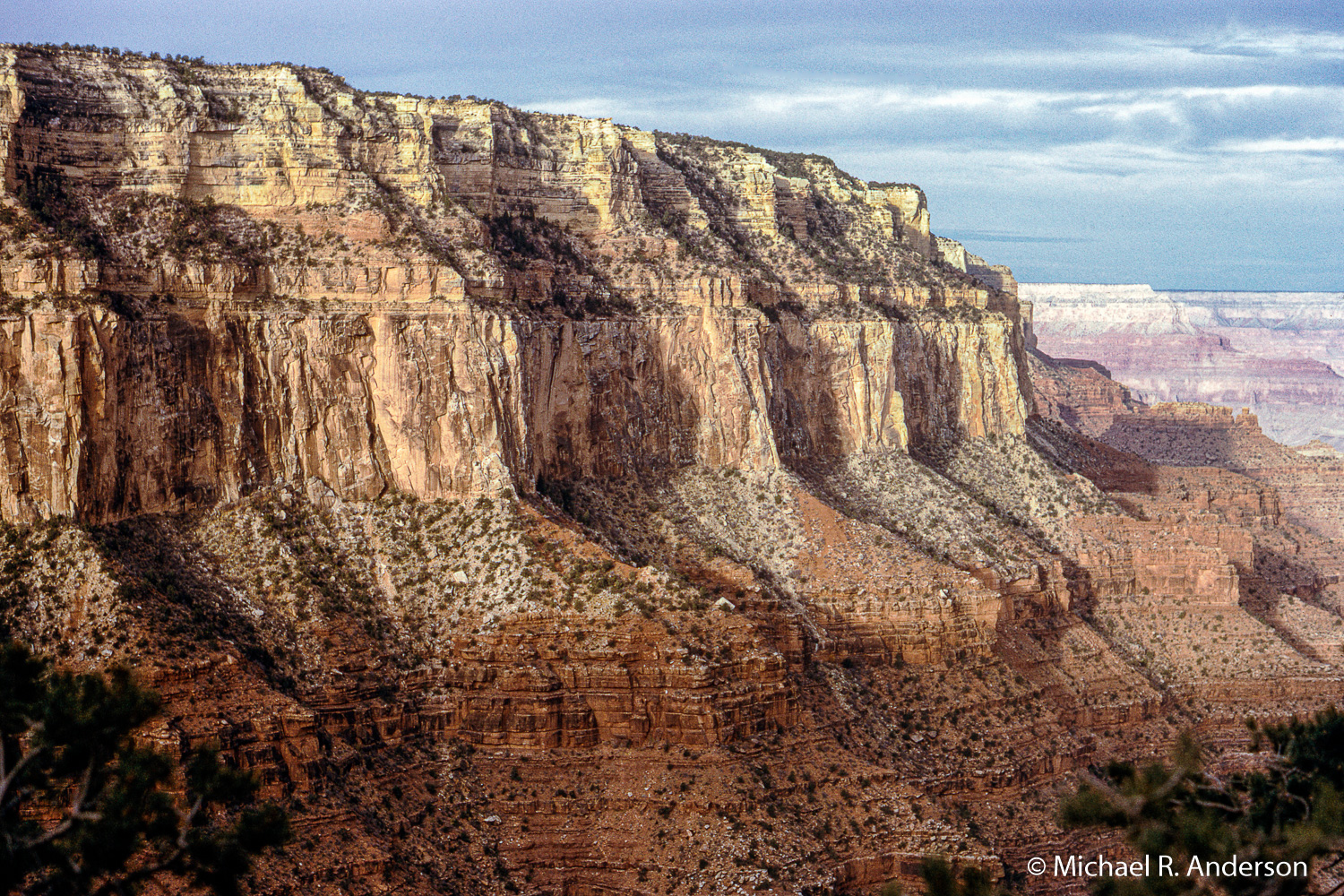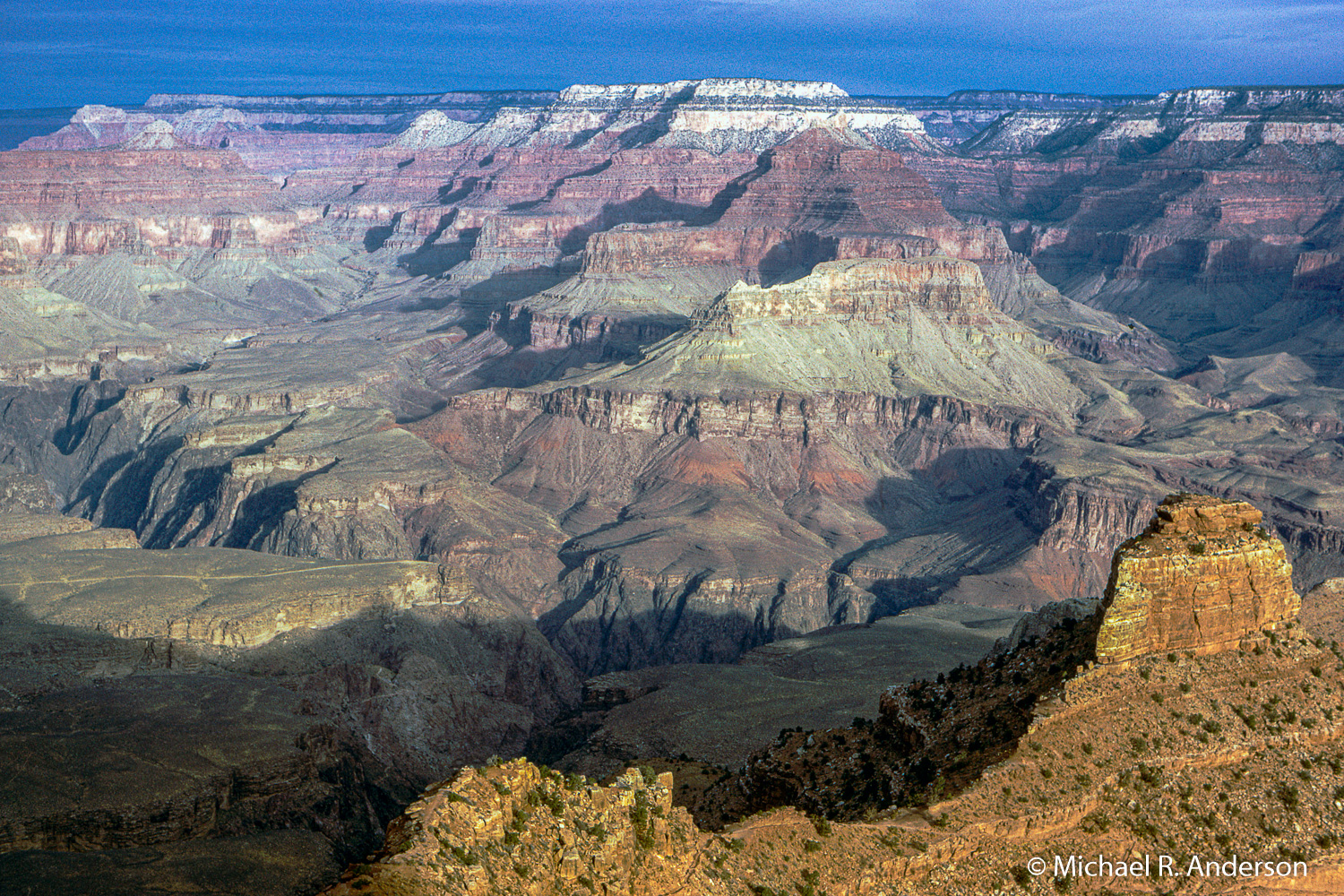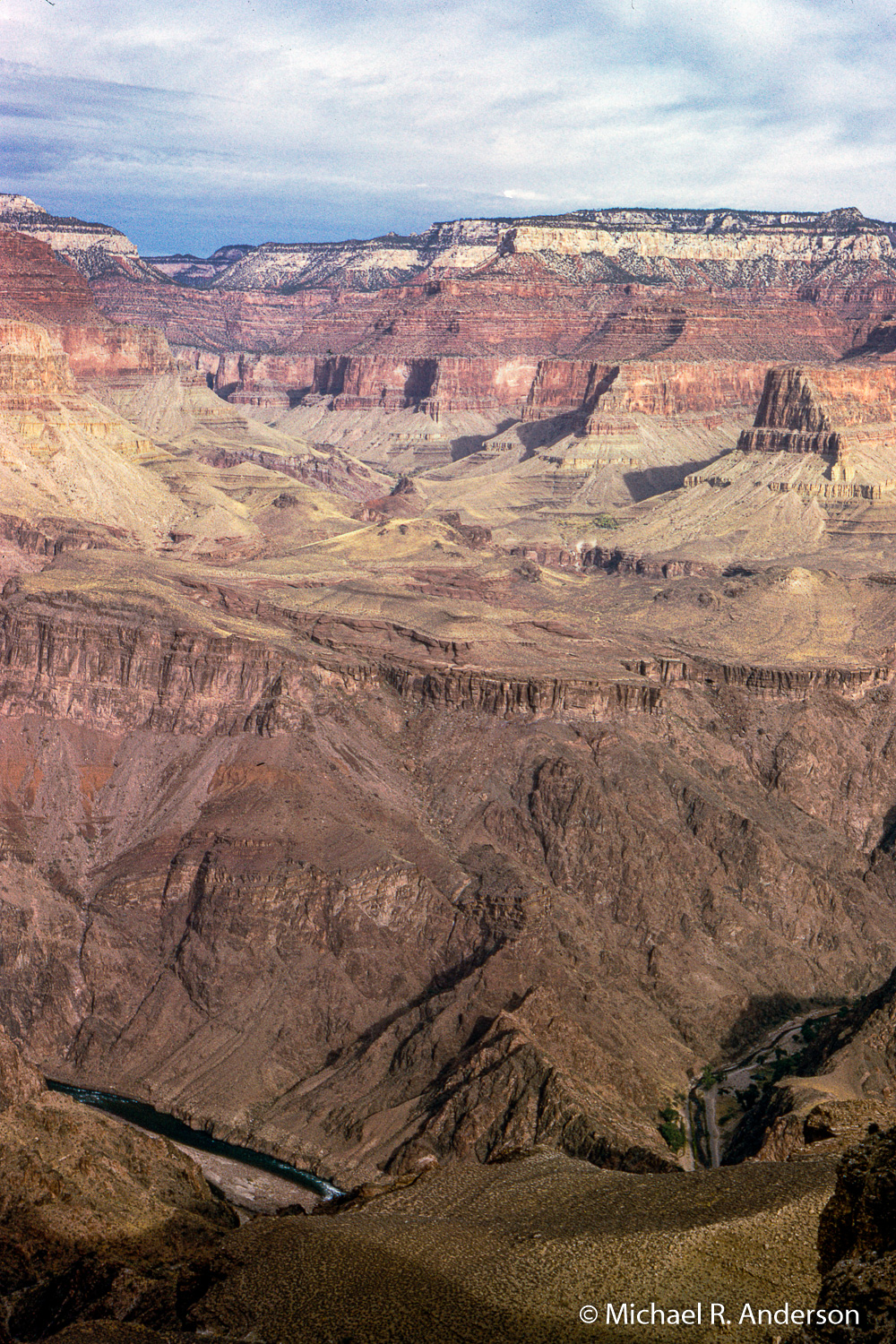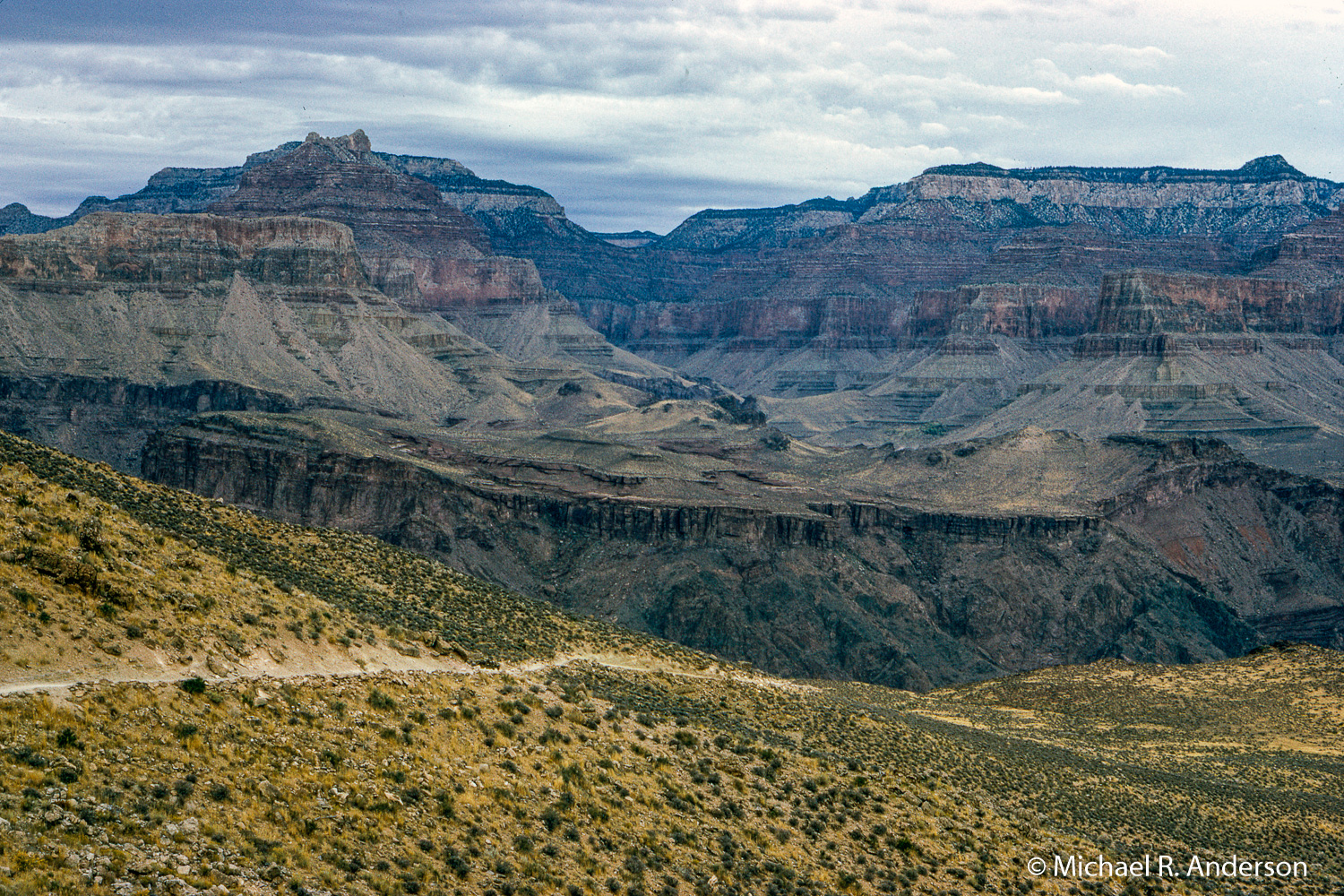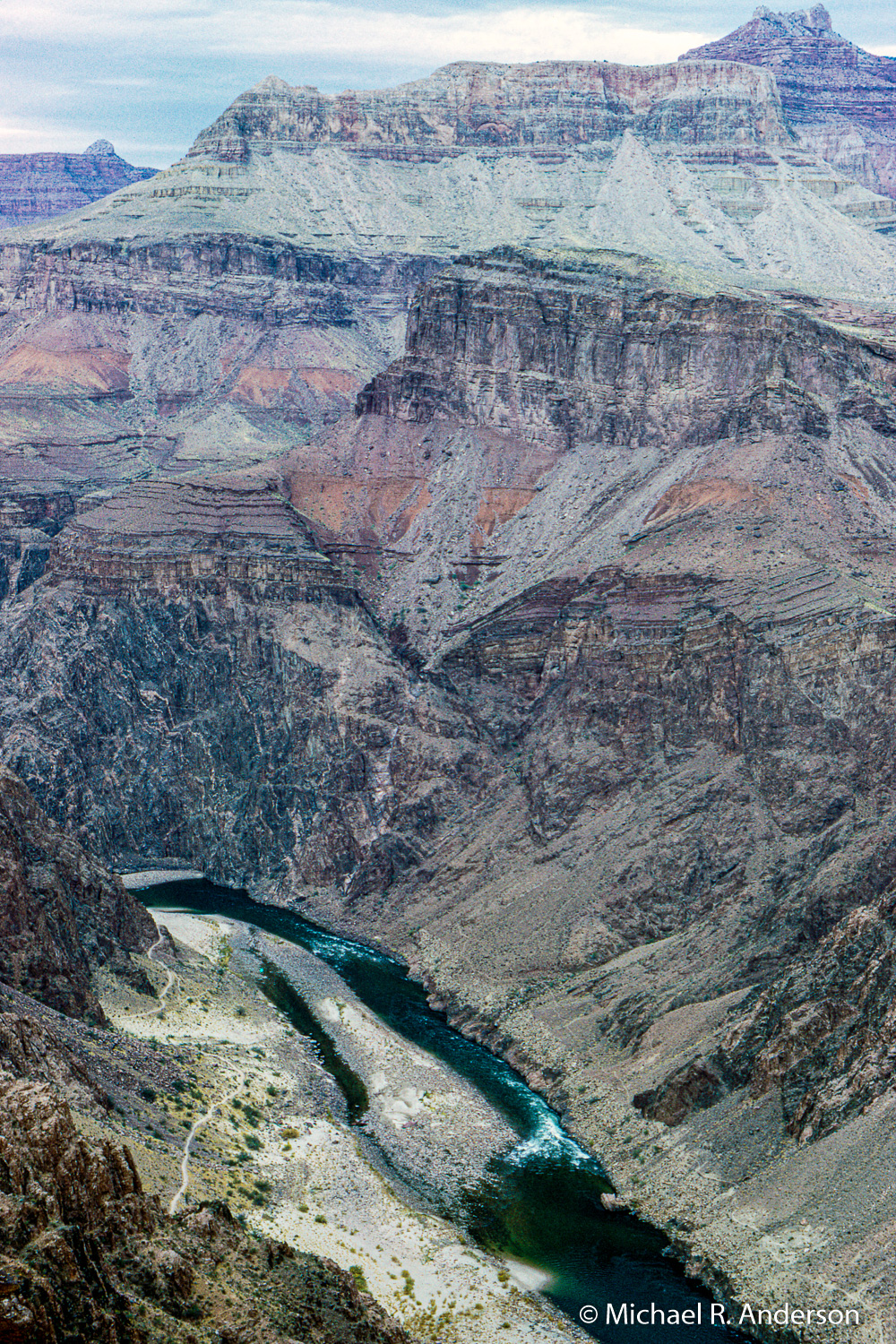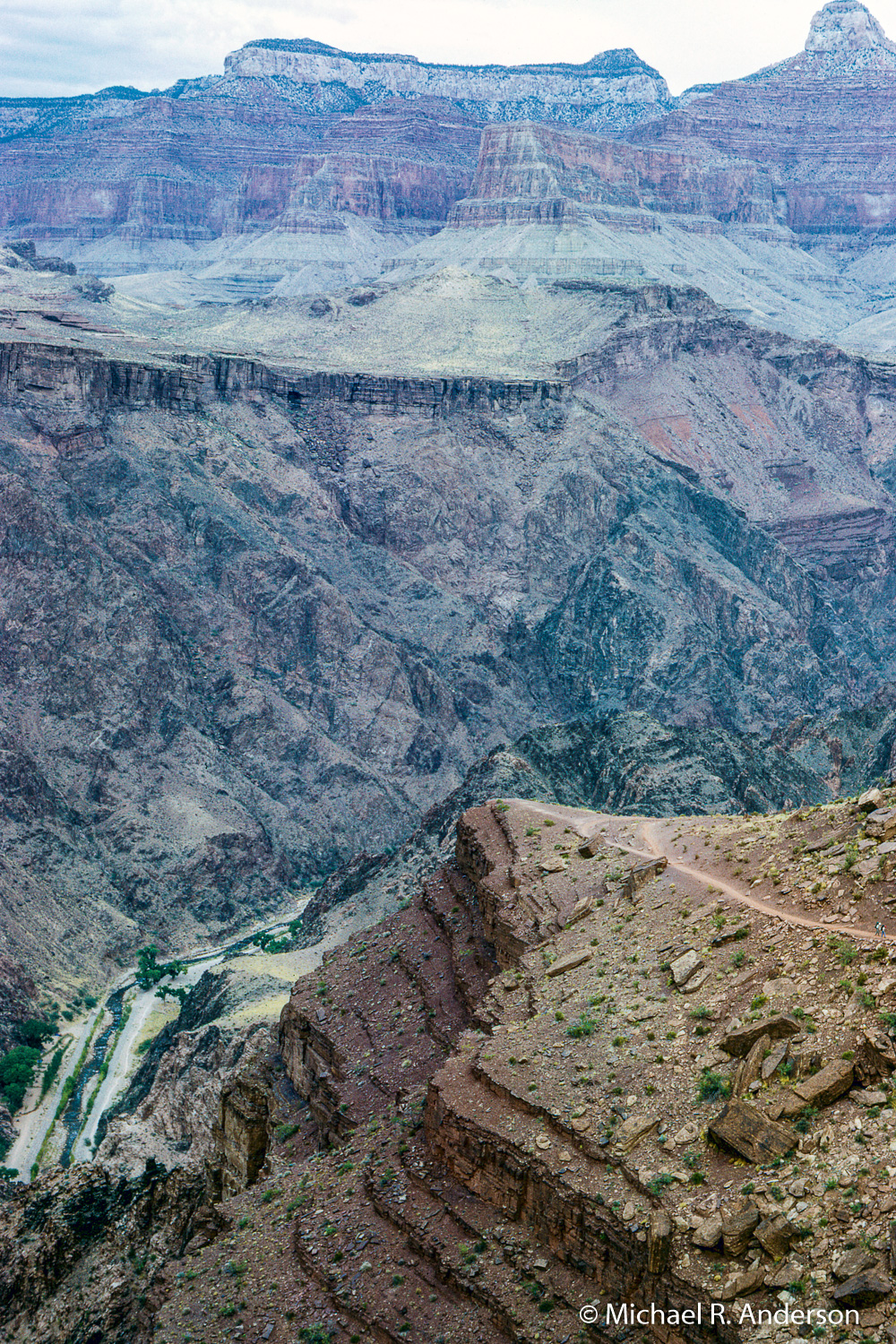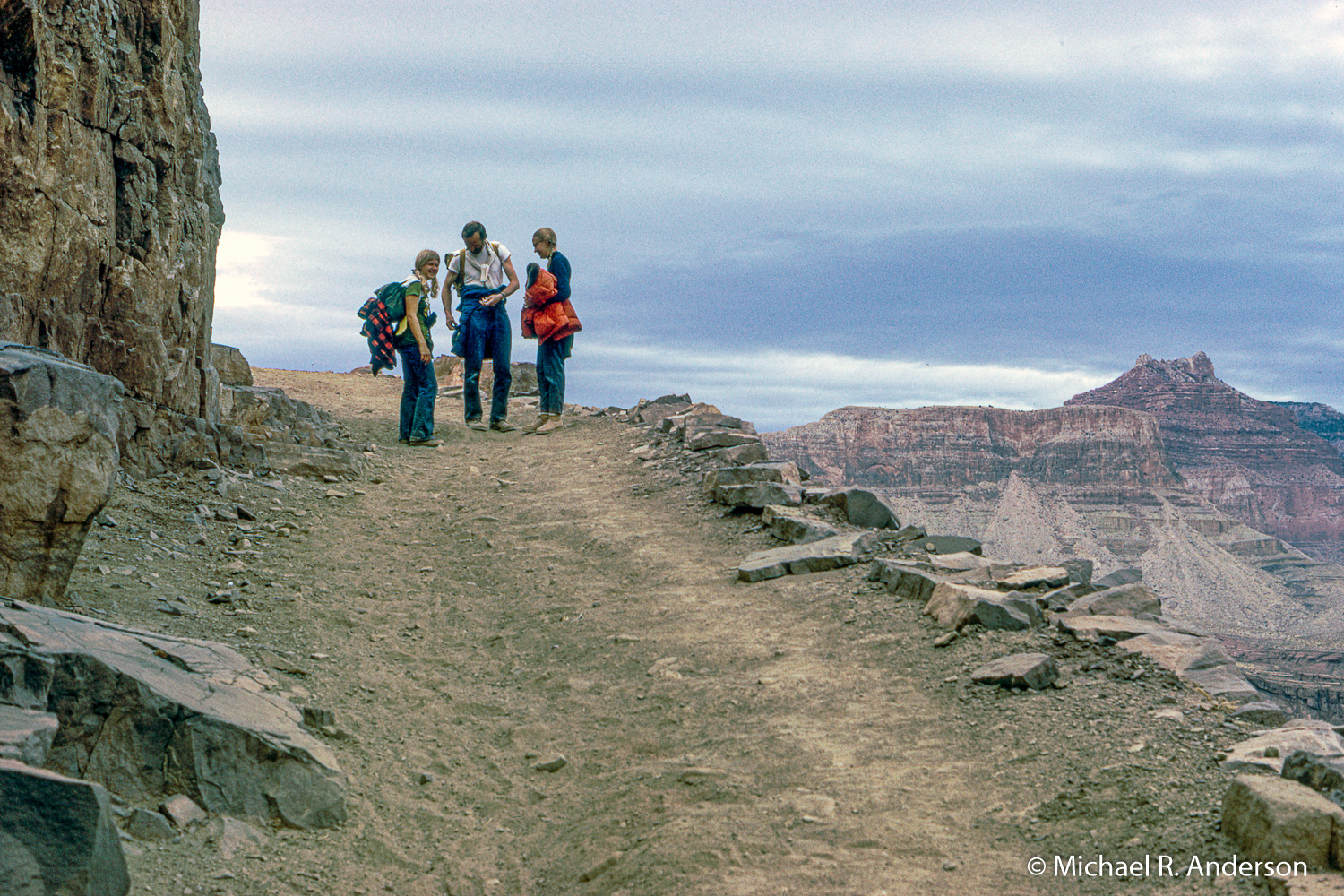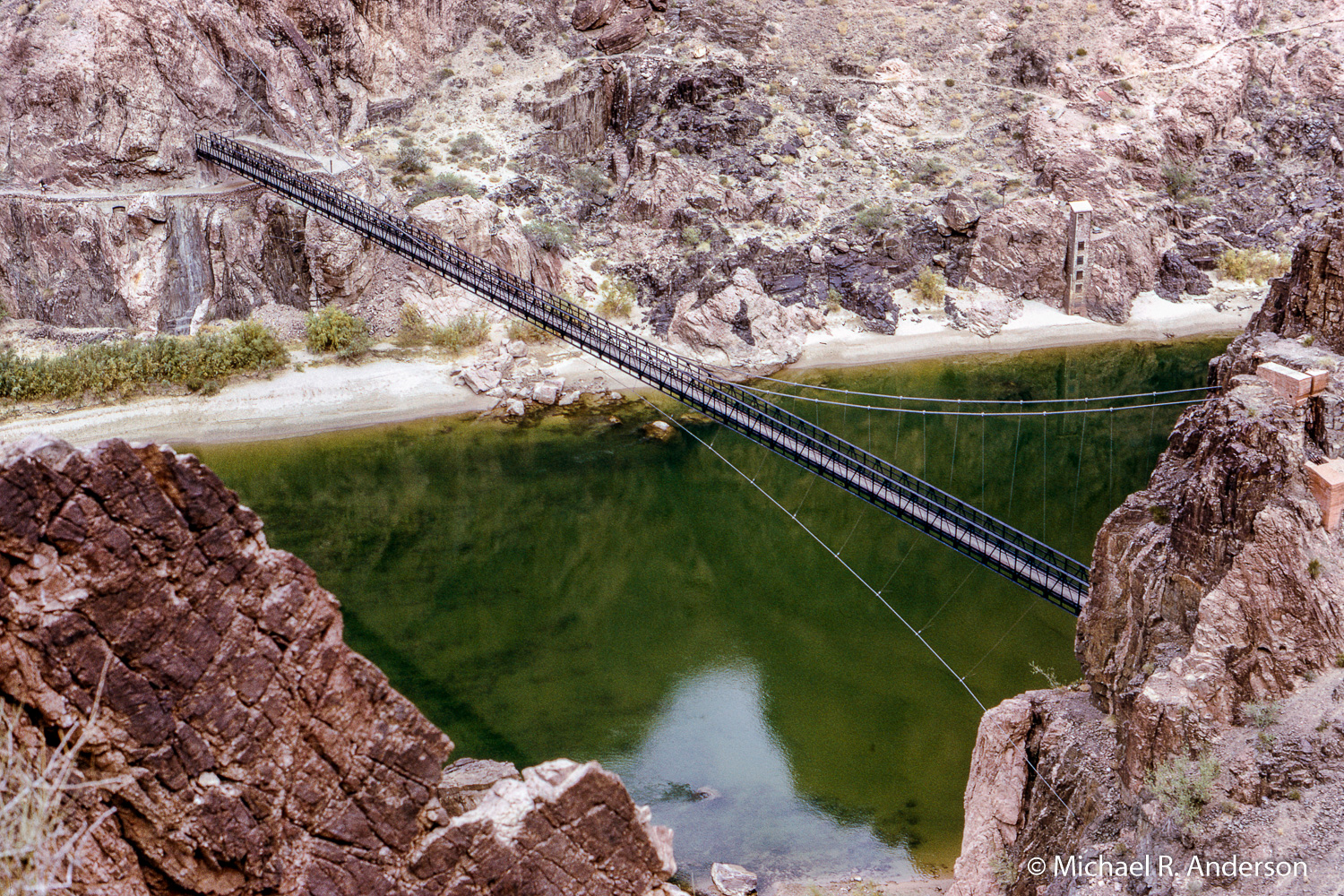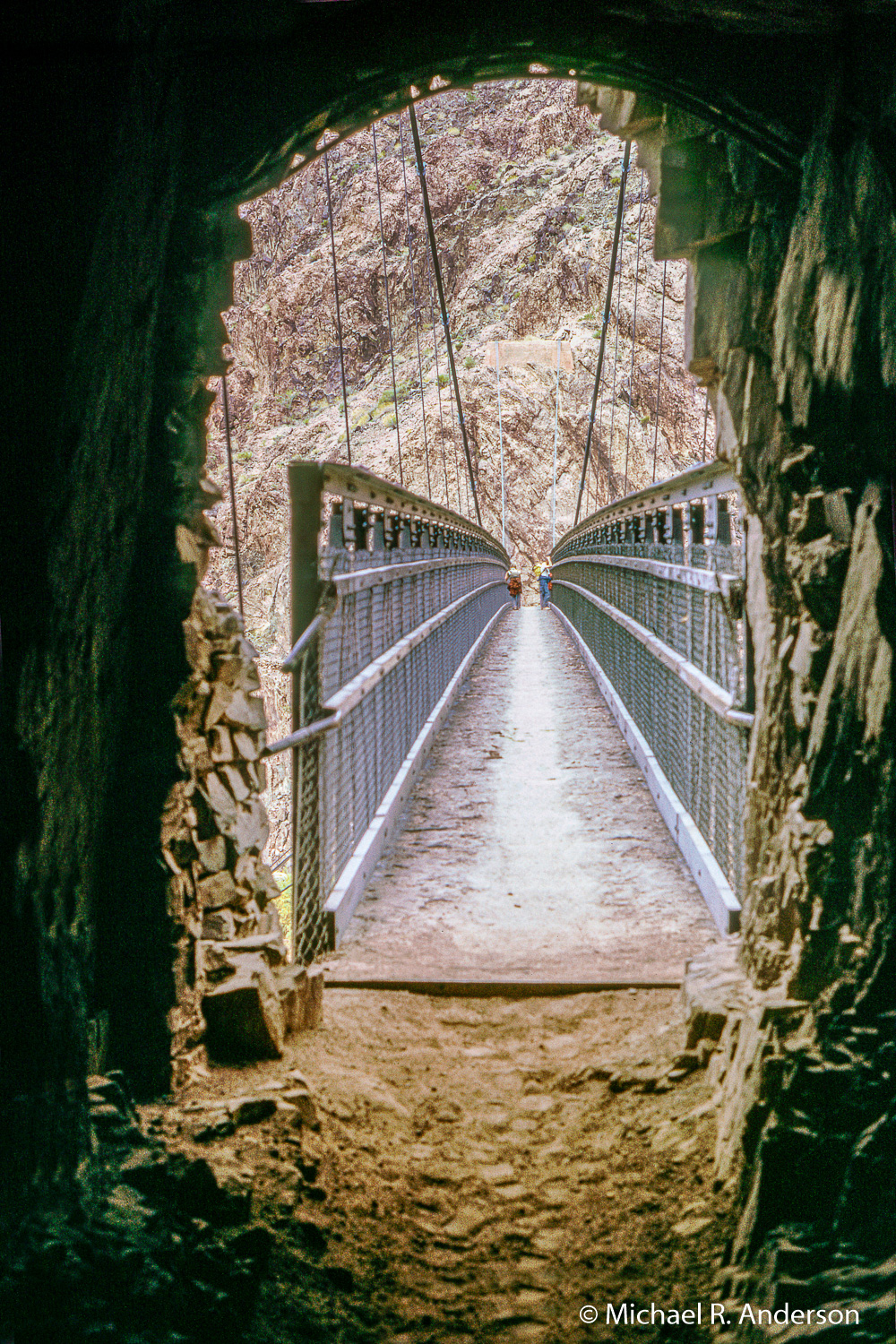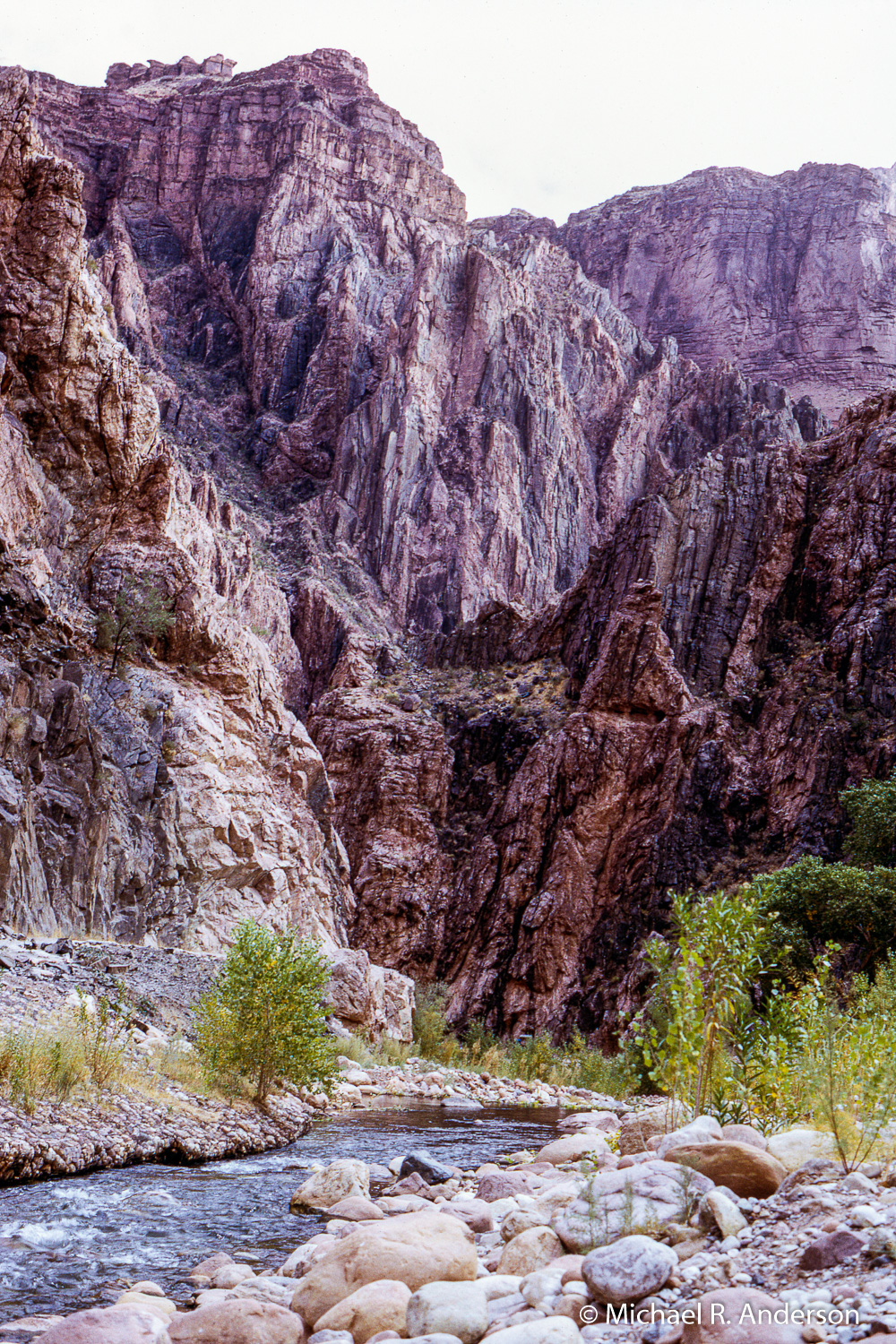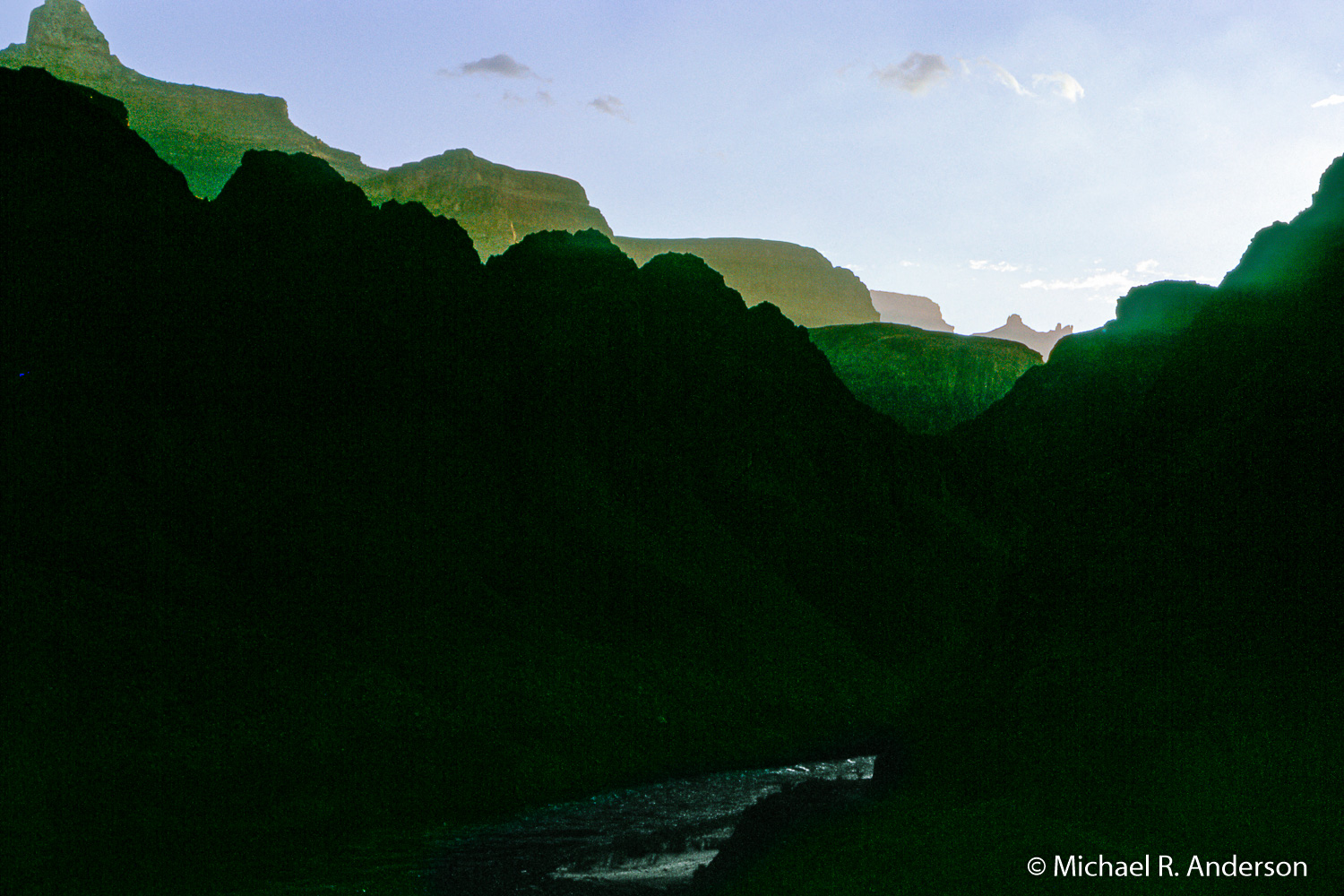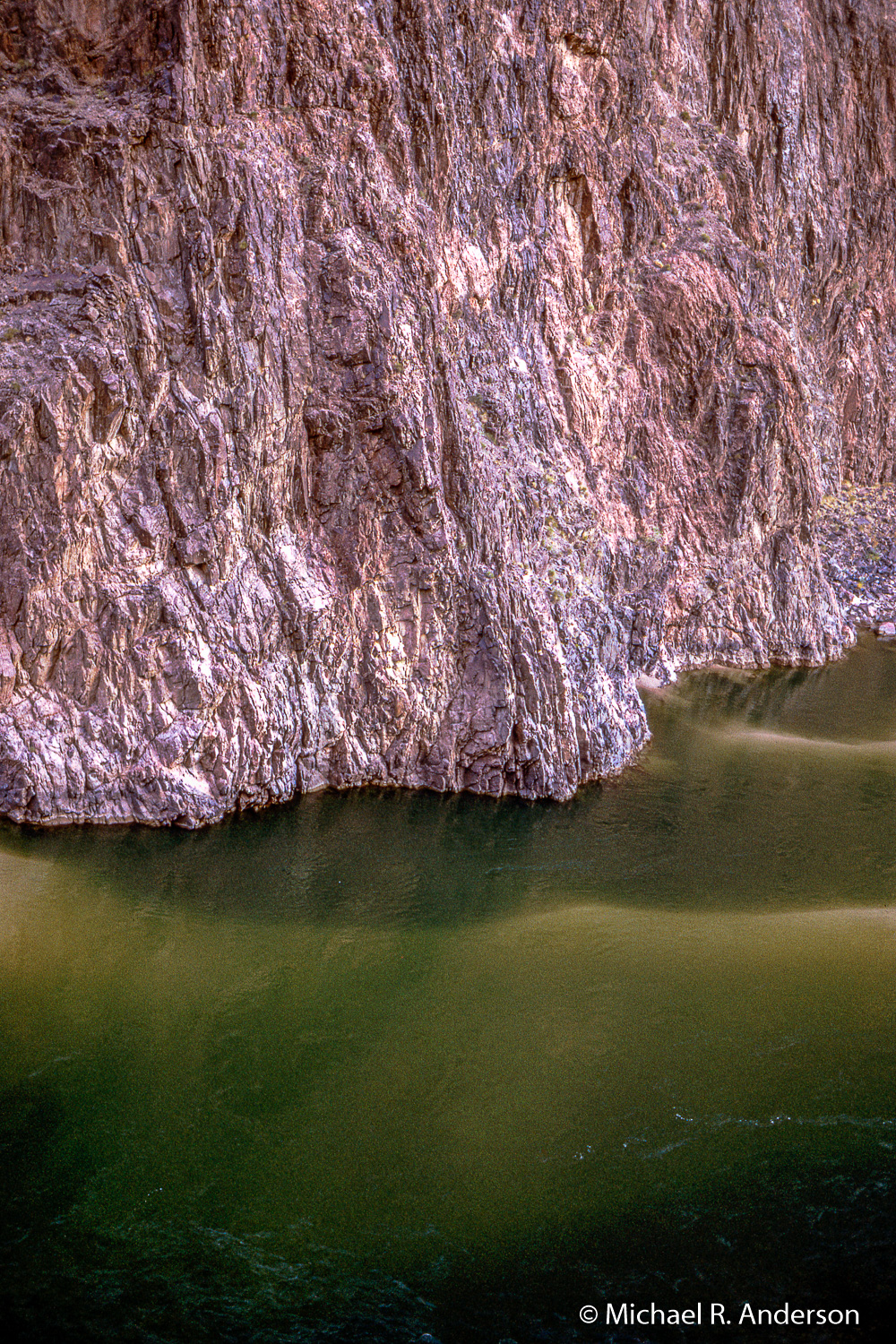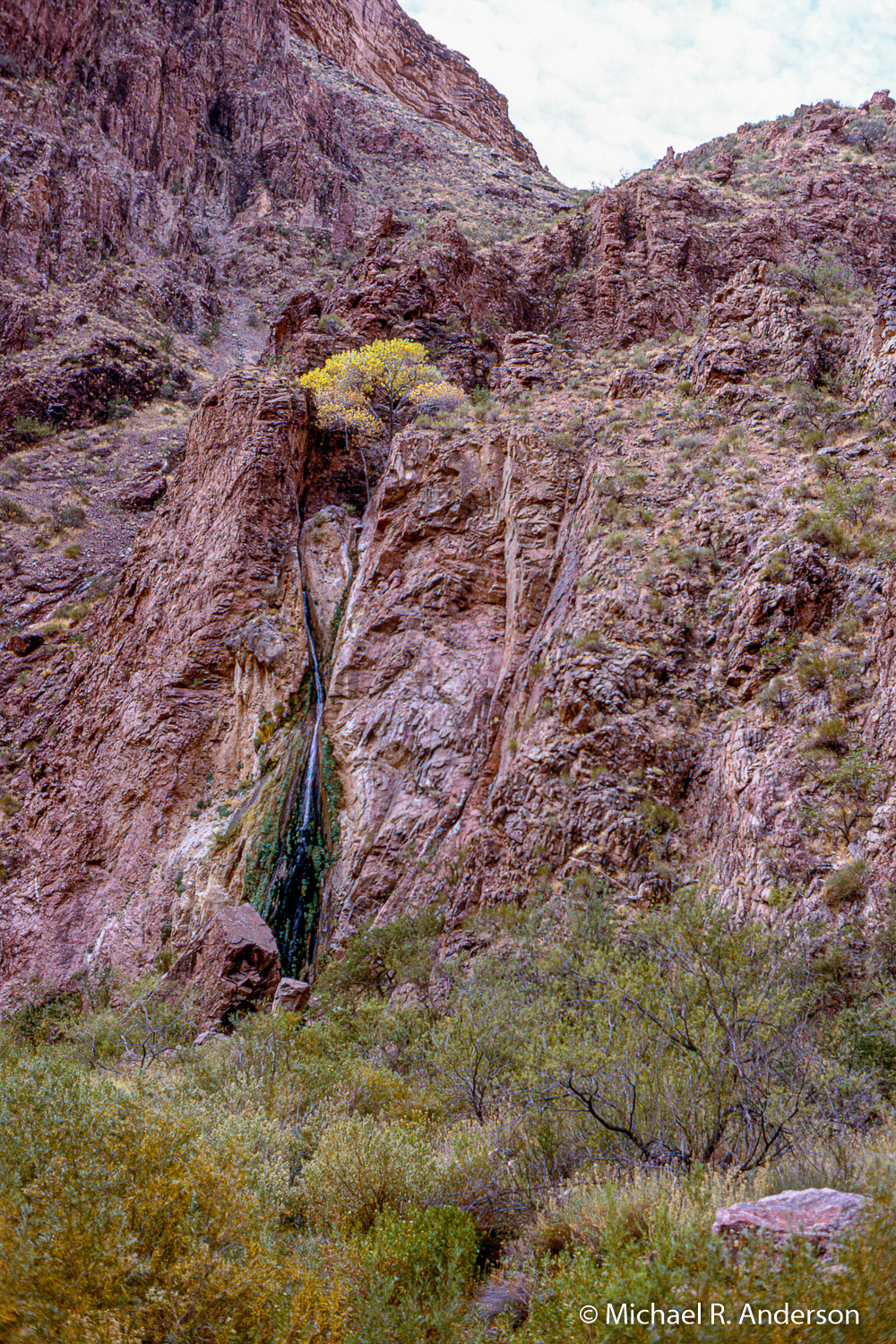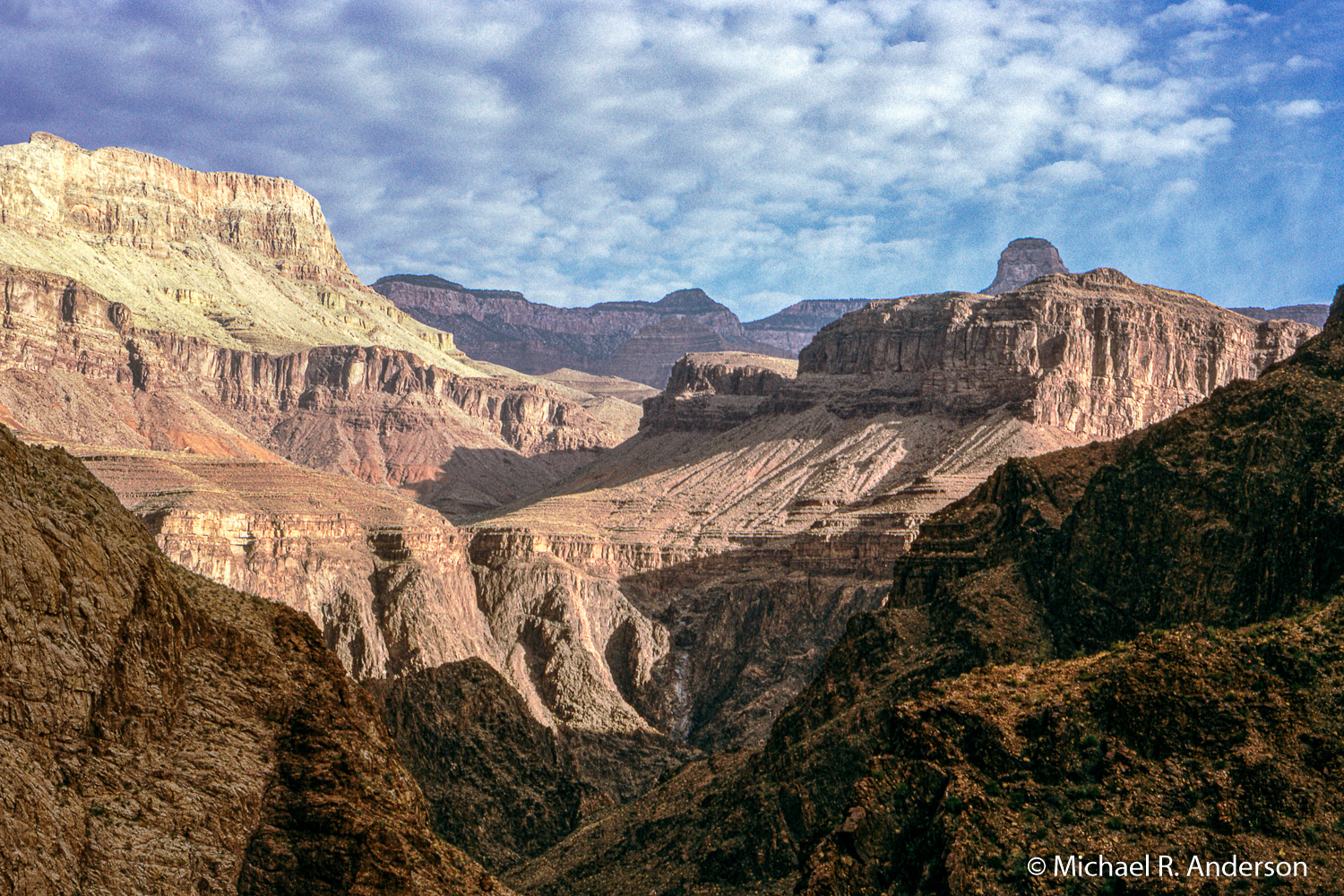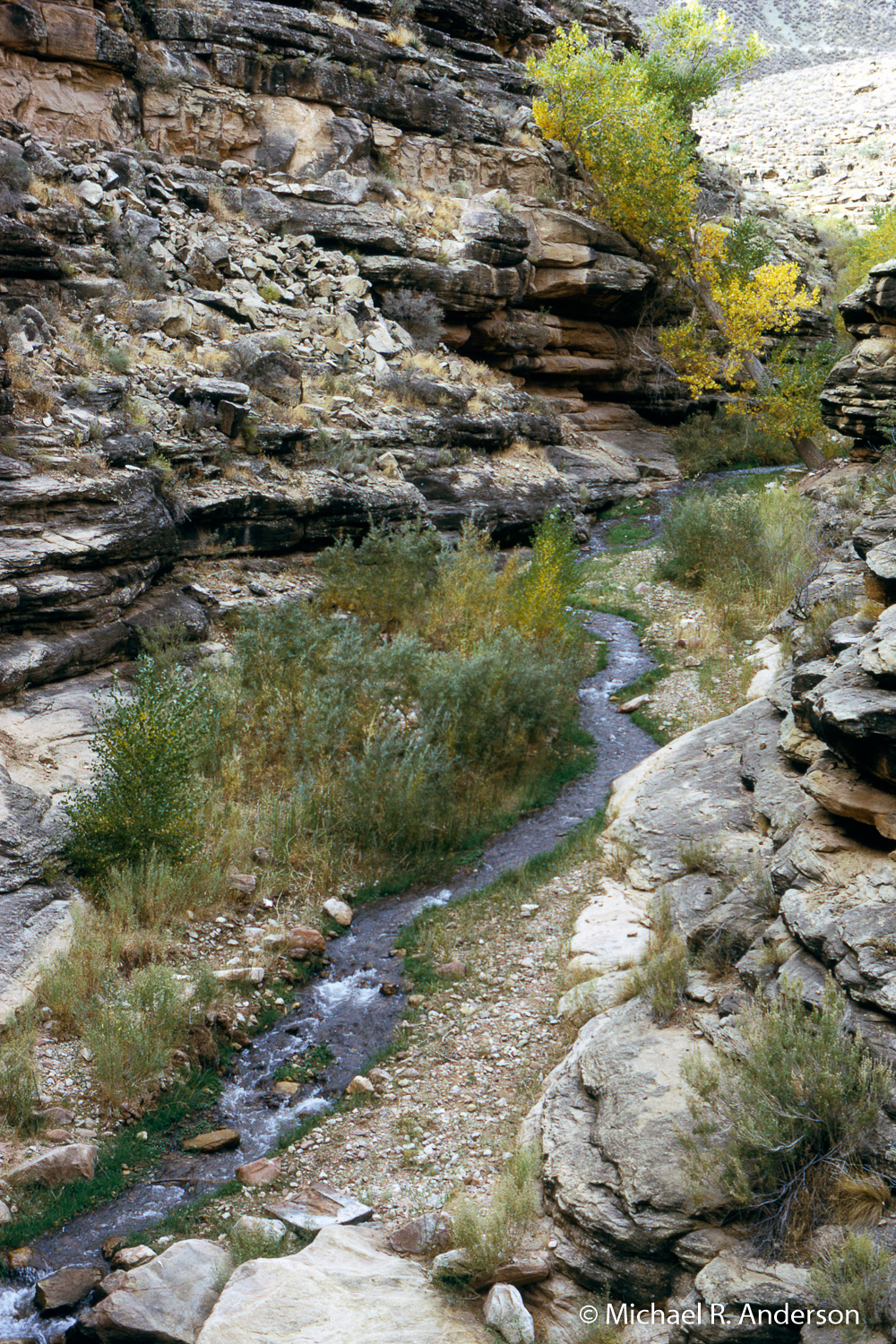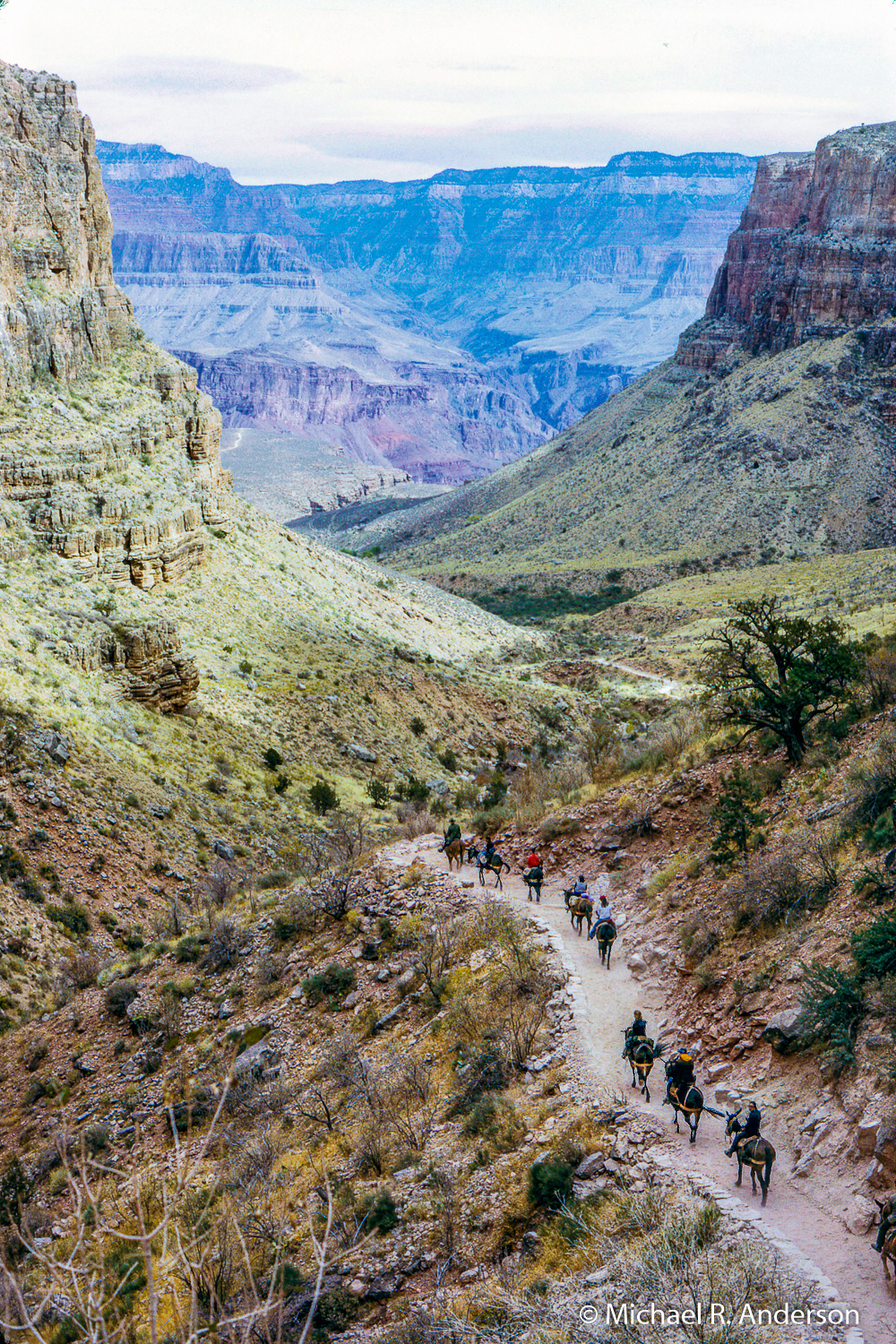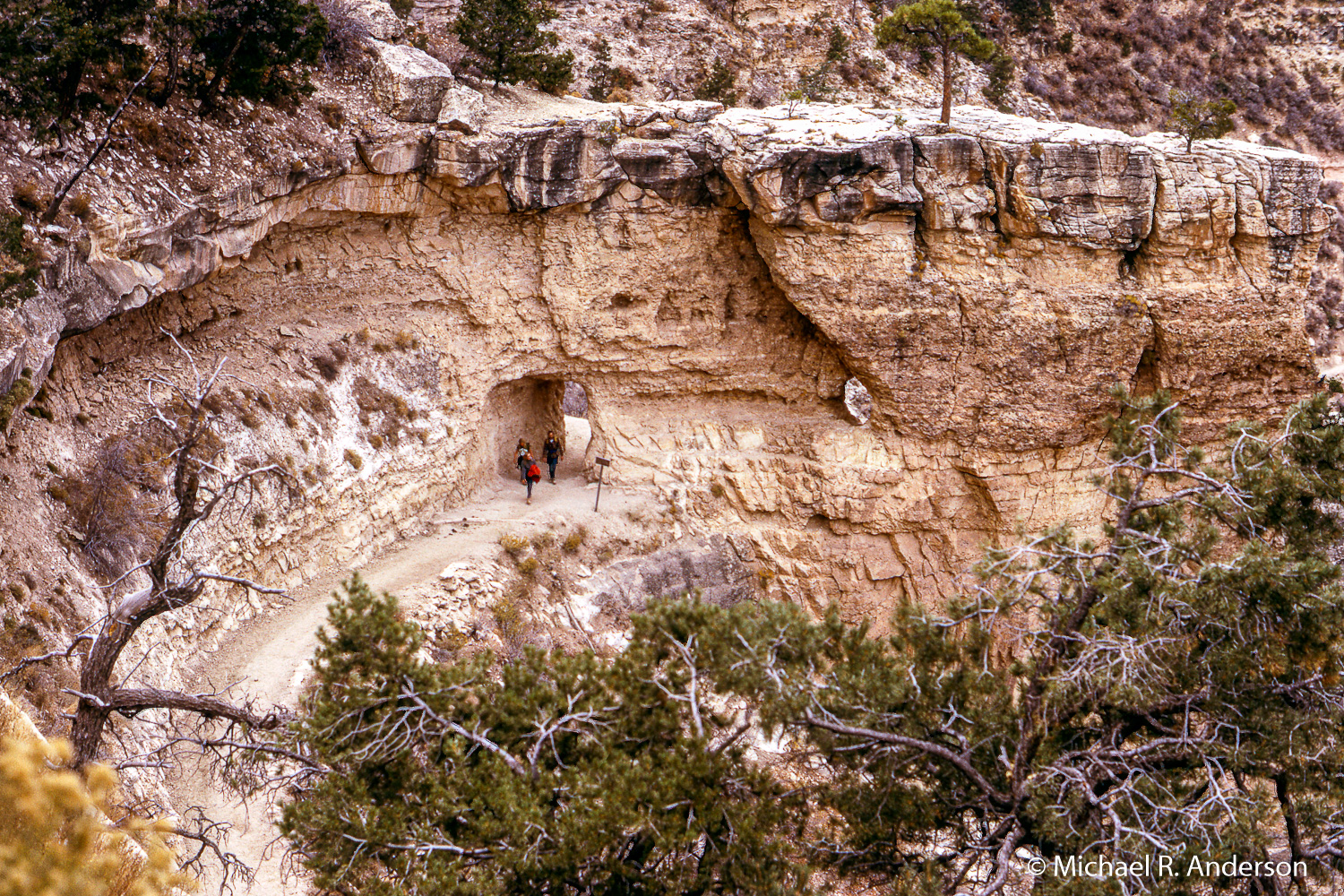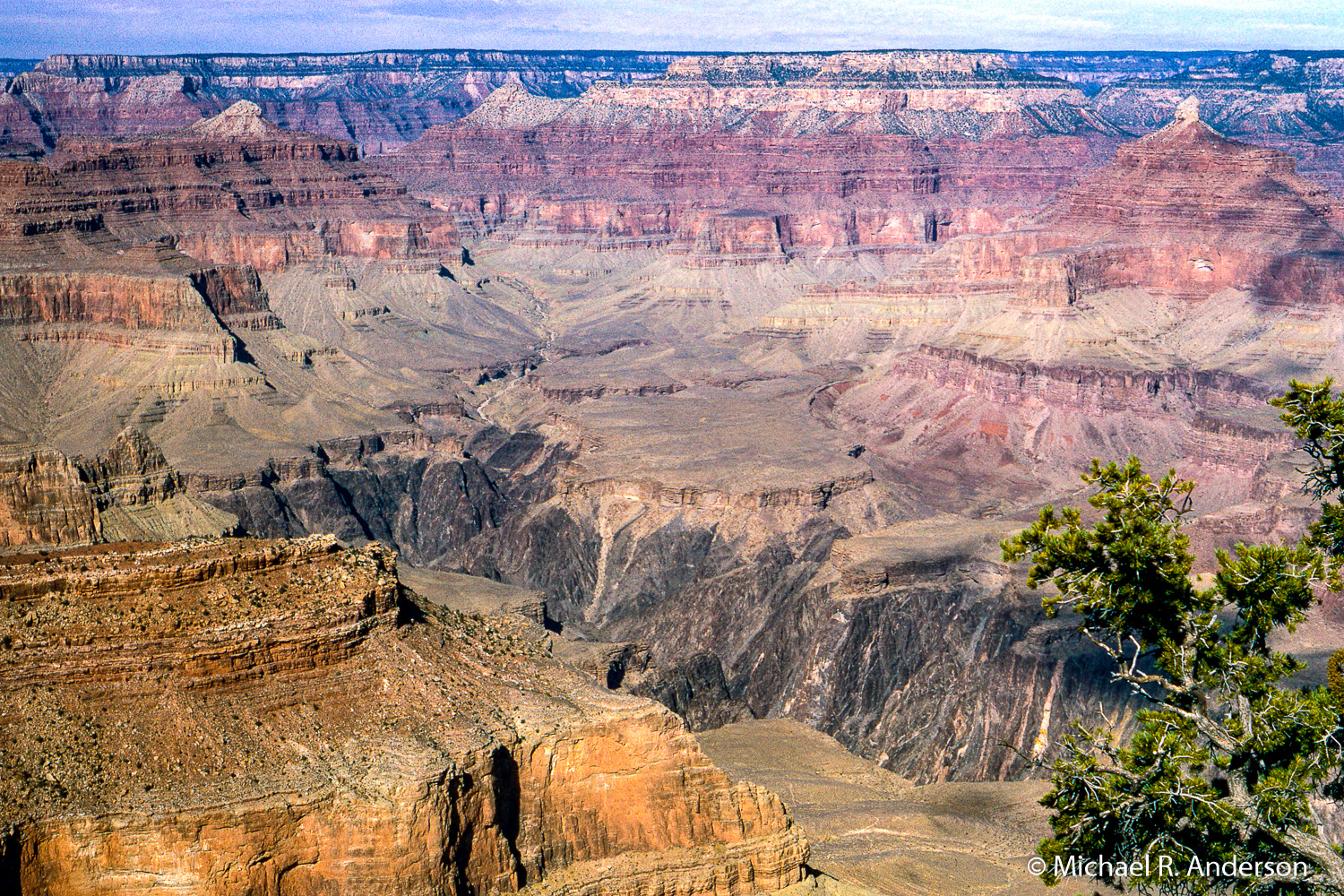
Native Americans have inhabited the area around the Grand Canyon for about 12,000 years. The first Europeans, soldiers led by García López de Cárdenas, did not see it until 1540. His disastrous failure to find the fabled Seven Cities of Cibola, however, resulted in the abandonment of exploration here for over 200 years. I didn’t arrive until 433 years later, in 1973.
In the summer of 1973, I was unemployed but Kathy had a job. That seemed a bit unfair so either I had to get a job or she had to quit hers. Since we were young, the latter option sounded like more fun. So, we let our apartment lease run out, stored our meager possessions (mostly books and records) in my Dad’s house, packed our tent and my guitar in the car, and headed out to see the Western United States.
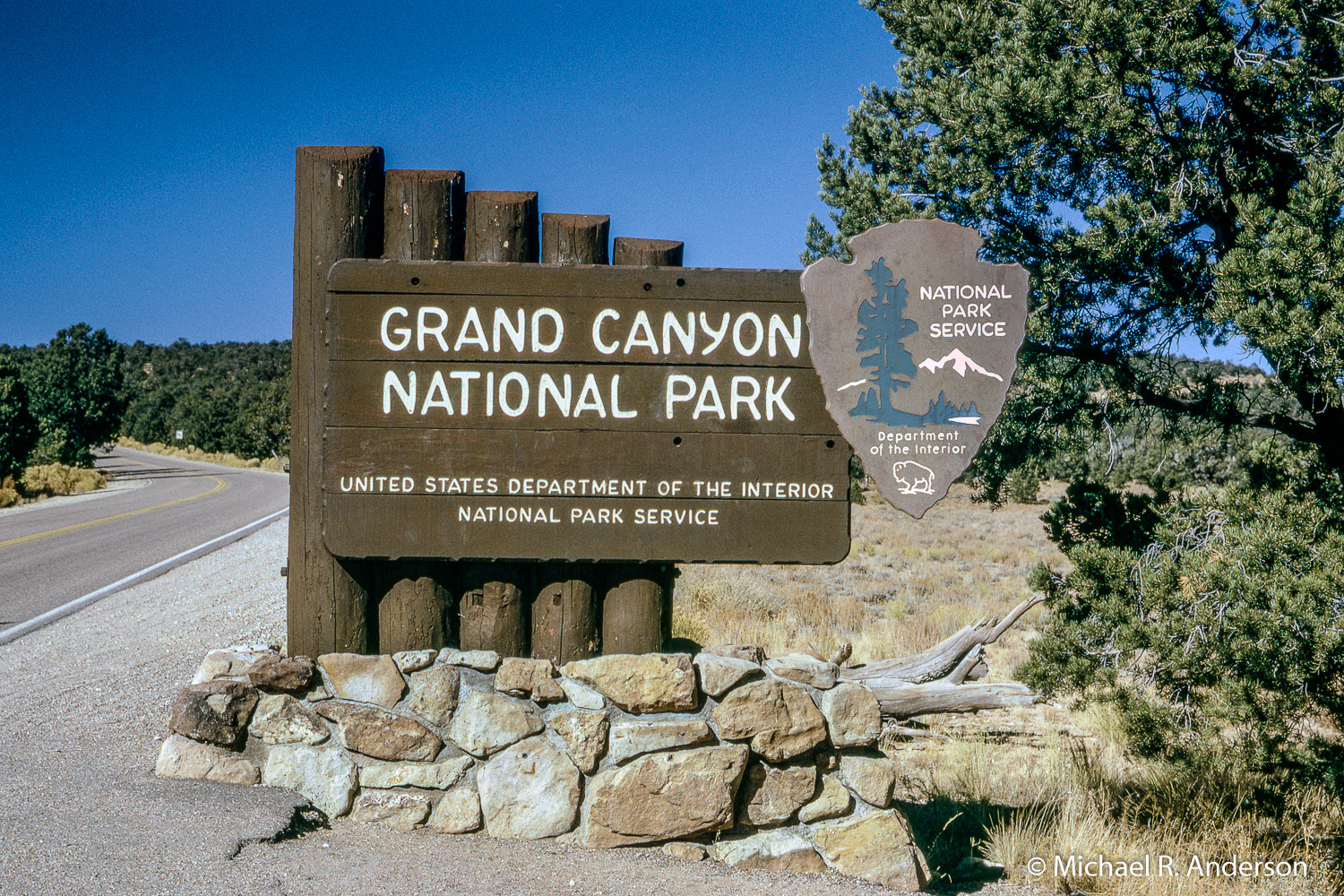
One of our many stops was the Grand Canyon. I’m not sure if I had ever read a book or seen photographs of the canyon in 1973, but I do know that when I finally peered into the abyss from the south rim of Grand Canyon National Park, I was speechless (unusual for me). I was also determined to hike down to the bottom and, hopefully, back out.
You could take day hikes below the rim without a permit, but to camp overnight you had to get a back country camping permit. I didn’t know what the chances would be for getting a permit for the next day or the day after but, since it was early November, it turned out to be an easy task. Though not required, it was suggested that we attend a Ranger program about hiking in the canyon. There we were told about all of the people who had to be rescued and how much it cost. We were encouraged to think twice and then think again. When you’re young, thinking once seems more than adequate.
We had been surprised to run into some friends from Madison in Zion National Park. They agreed to come to the Grand Canyon and join us on a hike down to the bottom and, hopefully, back out. One of the first things we did was go over to the trailhead for the Bright Angel Trail and watch a group get ready for a mule ride into the canyon. That method of transportation might be easier on the legs, but it looked much tougher on the butt.
To see as much of the canyon as possible, we decided to descend by means of the South Kaibab Trail, hike along the Colorado River to the Bright Angel Campground, where we would spend the night, and then return via the Bright Angel Trail. By doing this, we wouldn’t have to double back on any part of the trail; it would all be new.
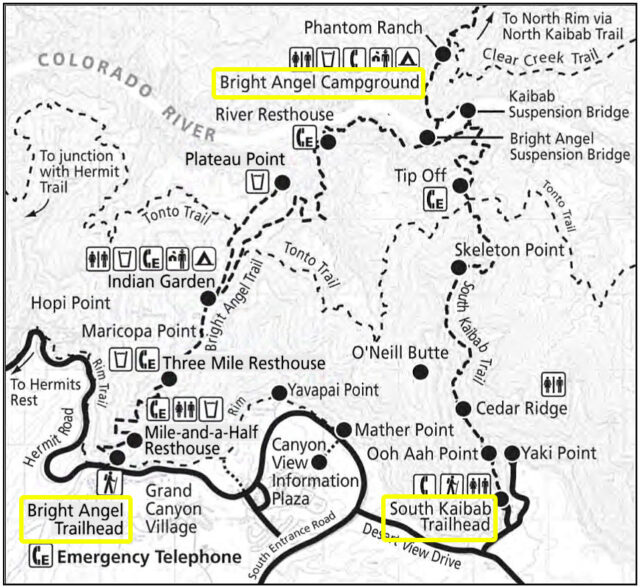
The early morning view of the canyon from the South Kaibab Trailhead was beautiful. No other hikers were there and, much to my surprise, we didn’t see any other hikers along the entire route to the river. The trail started with a series of switchbacks and then alternated between less steep sections and additional sections of switchbacks. The distinctive O’Neill Butte could easily be seen in the distance.
The Park Service had placed signs along the trail identifying the varied and colorful layers of sedimentary rock. The trail leveled off significantly as it reached the Tonto Platform, the relatively wide section that lies on both sides of the canyon. We got our first good view of the river from there.
At the edge of the Tonto Platform we reached a place known as the Tip Off. We could see both the Colorado River and Bright Angel Creek from there. In this location, the wide upper portion of the canyon passing through the softer sedimentary rock, meets the narrow inner gorge where the canyon passes through hard, dark metamorphic and igneous rocks. We were told that this was Vishnu Schist, which was almost 2 billion years old.
The nature of the trail changed significantly after the Tip Off. Much of it became relatively narrow with rocks rising steeply on one side and dropping off steeply on the other. Although it was wide enough for easy walking without any concern, mule trains carrying tourists or supplies also used this trail and they had the right-of-way. One passed us on a narrow part of the trail and we had to stand quietly to the side while the mules passed by about a foot away from us.
At the bottom of the trail we went through a short tunnel and then crossed to the north side of the river on a suspension bridge. We later learned that the materials for the bridge, including the long cables, were all carried down by Native Americans. I don’t remember the details, but a quick search on that inter-web thing revealed the following information:
The 1-ton, 1.5-inch thick, 550-foot long suspension cables needed to span the great river were transported to the river by 42 Havasupai tribesmen, walking single file down the trail while carrying the cables on their shoulders.
We walked along the side of the river until we reached Bright Angel Campground. Taking off my dirty boots and sweaty socks and putting my feet in the cool creek was a real treat. It had taken us 4 hours to get to the bottom of the canyon. According to the Park Service, the elevations and distances are:
- South Kaibab Trailhead: 7260 feet
- The Tip-Off: 4000 feet, 4.4 miles
- Bright Angel Campground: 2480 feet, 7 miles
- Elevation Loss: 4780 feet
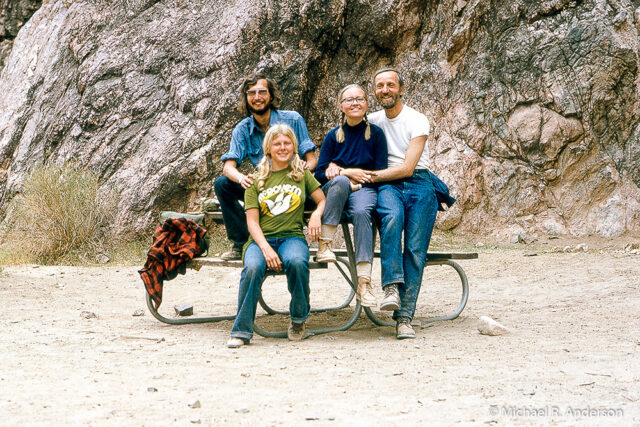
We wandered over to Phantom Ranch to watch as a mule train that had departed from the Bright Angel Trailhead arrived. The moans and contortions of the dismounting riders led me to believe that my guess about mules being tough on the butt was correct. A Ranger was there to answer questions. One of the new arrivals said he heard there was a billion-year old rock down here. He wanted to know if there was a sign on it. I don’t know how the Ranger was able to keep a straight face as he explained that the entire rock formation here was that old.
We had hiked down with food, water, and extra layers of clothes in day packs, but we didn’t have a tent. Our plans were to sleep out under the stars. That seemed like a good idea until something we had not anticipated showed up. While laying on the ground looking up at the stars, a mouse ran over my chest. Then another. Then I heard crunching noises and found a mouse trying to eat through my pack to get my food. Chasing the mice away only gave about a 30-second respite. Our final solution was for each of us to lay down on top of a picnic table. Not comfortable, but mice free.
The next morning we all woke early. Actually, we probably didn’t wake but just climbed off of the picnic tables. It was cool and quiet and the inner gorge was still in darkness. After eating whatever dry things we had along for breakfast, we packed up and left. We knew very well that the walk up would be much more challenging than the walk down. The South Kaibab Trail had a difficulty rating of moderate, but the Bright Angel Trail was rated strenuous.
The start of the return hike was not too difficult and we made pretty good time. It was still cool and the sun was low in the sky. We took a couple short breaks along the way but we decided to stop at Indian Garden for a longer food, water and rest break. Checking my map I noticed that we were almost half way up. We’d hiked 4.7 miles and 4.8 miles remained. Then I realized that we had not gone almost half way with respect to elevation. We had only gained 1320 feet to reach Indian Garden but still had 3080 more feet to go before reaching the rim. You didn’t have to be a geologist to know that the trail would soon get much steeper.
Leaving Indian Garden we passed another descending mule train. The trail was not narrow here so it was easy to let them pass by. We decided that for the remainder of the hike we would slow our pace and stop more frequently for rest and water. That was especially important later in the day because the final leg of the trail was a long series of steep switchbacks. There’s a small tunnel just before reaching the rim so when we passed through that we were in pretty good spirits. It had taken us almost 8 hours to hike out. According to the Park Service, the elevations and distances are:
- Starting elevation: 2480 feet
- Indian Garden: 3800 feet, 4.7 miles
- Bright Angel Trailhead: 6860 feet, 9.5 miles
- Elevation Gain: 4380 feet
After 16.5 miles of hiking on steep rough trails, I was happy to find that I did not have a single blister. I guess those thin nylon sock liners did what they were supposed to do. Don’t get me wrong, the next day my legs reminded me that, even though I did a lot of hiking then, this trail was a bit more strenuous than most of the trails I’d been on.
That night we went out for a nice dinner instead of having tuna helper or mac and cheese back at the campsite. The next day I walked along the rim to find a view of the switchbacks on the last stretch of the Bright Angel Trail. I’m glad I didn’t see this before we decided to hike.
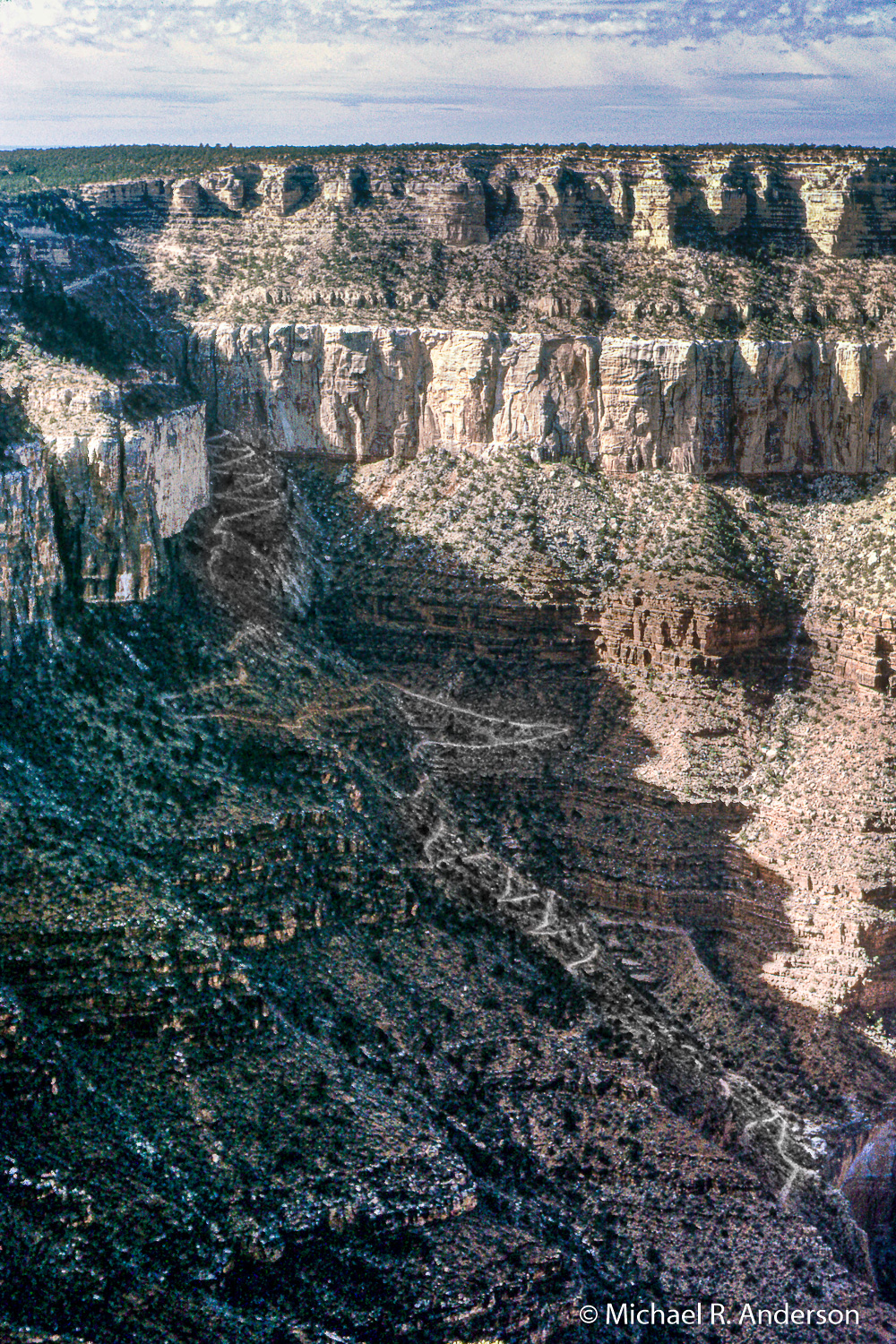
A few years ago we were back at the Grand Canyon. When I stood on the South Rim and looked out, it seemed to be much deeper than it had been in 1973. We were lucky to have gone when it wasn’t so deep!
